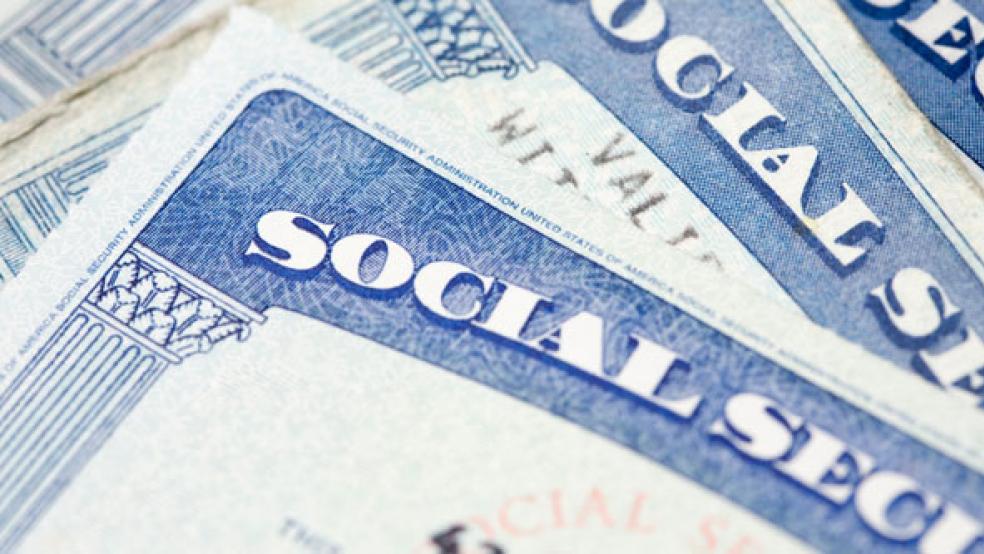Successfully applying for Social Security disability benefits can seem like a daunting prospect.
Claims for Social Security Disability Insurance — which pays out $143 billion each year to more than 11 million Americans unable to work because of a serious illness or impairment — have been ticking upward. The Social Security Administration received nearly 2.7 million applications for the program in 2013, up from 1.9 million a decade earlier, according to its most recent annual report.
Related: Raising the Retirement Age for Social Security Hurts These Workers the Most
The rate of applicants who are ultimately approved, however, has remained slim — averaging just 36 percent for claims filed from 2004 to 2013, according to the report. About a quarter are awarded benefits on their initial claim, while another 2 percent are approved on appeal and 11 percent at hearings.
"The reality is, more often than not, you'll be denied," said Stephen Dunn, a staff attorney with the New York Legal Assistance Group, which provides free legal services to low-income New Yorkers.
In fact, waits for a hearing can stretch the process out for a year or longer, he said.
Congress has been looking at possible reforms for years that could streamline the process without sacrificing the rigor necessary to nix fraudulent claims, said former Congressman Earl Pomeroy, a co-chair of the Committee for a Responsible Federal Budget's SSDI Solutions Initiative. Congress pledged last fall to address the issue, after bailing out SSDI in its budget deal — using temporary measures to extend the program fund's solvency through 2022.
Related: Harsh New Penalties for Social Security Fraud Are Coming
But that's unlikely to provide short-term relief.
"My guess is, while reforms are being studied and proposed, it's unlikely that in the very near future, Congress is going to enact anything sweeping by way of process reforms," said Pomeroy.
In the meantime, the SSDI process puts a lot of responsibility on the applicant to get the right materials to the right people at the right time. "[Applying] is almost like a job in itself," Dunn said. "That's ironic, because you're applying because you can't work."
Sometimes, applicants simply aren't eligible, said Nolo senior legal editor Bethany Laurence, an attorney who specializes in disability law, Social Security and Medicare. Namely, they don't meet SSDIrequirements that their condition be "expected to last at least one year or result in death," preventing them from working.
Related: Raising the Retirement Age for Social Security Hurts These Workers the Most
But there are also missteps that could unjustly kick your application to the denial pile.
Getting it right the first time
To improve your chances of a successful claim, make sure to gather as many of your medical records as possible in advance of filing your claim. "How long this process takes is opaque to the claimant," said Dunn. "It's possible [SSA] will make a decision while you're waiting for these records to be sent." You want them to have as full a picture of your condition as possible, right from the start.
Claims examiners want to see that you've received medical care for your condition regularly and recently, said Laurence, who is also the editor of DisabilitySecrets.com. Good medical records help establish both the seriousness of your condition and how it has impaired your abilities. "The doctor's opinions about your limitations can make or break a claim," she said.
Related: Rand Paul Says Social Security Is Being Robbed. It’s Not True
(Per Social Security Administration data, 28 percent of final medical denials in 2013 were because the impairment was considered "not severe," and another 31 percent because the applicant was still considered able to do other kinds of work.)
It helps to have your doctor fill out a residual functional capacity formdetailing your limitations and prognosis. Include that with your initial SSDI application, said Laurence.
Follow up to make sure copies of those records make it into the right hands, said Dunn. After your application is submitted, you'll receive a packet in the mail with more forms. Resubmit your medical records with those, he said. That eliminates the risk of records being waylaid.
It's also important to carefully navigate income. To qualify for disability benefits, an applicant can't be engaging in "substantial gainful activity," which in 2016 the Social Security Administration considers to be earning more than $1,130 per month.
"A big mistake people make is continuing to work full-time up until the application date, or until they get a decision," Laurence said. "They say, I can't afford to not work." But doing so can undermine your claim that a disability prevents you from working.
Collecting unemployment benefits can also hurt your case, but not always, she said. (It's a catch-22. You're telling unemployment that you're willing and able to work but telling Social Security that you are unable to work.) Be prepared to explain how your circumstances have changed.
Don't make the mistake of failing to anticipate a denied claim, either.
"If you do get denied, you have to act on requesting an appeal quickly, within two months," Dunn explained.
While the appeal process can be lengthy, if your claim is ultimately approved, you can receive retroactive benefits based on that initial filing date. Start over and you're resetting that clock, too.
This article originally appeared on CNBC. Read more from CNBC:
Owners cautiously taking cash out of homes




